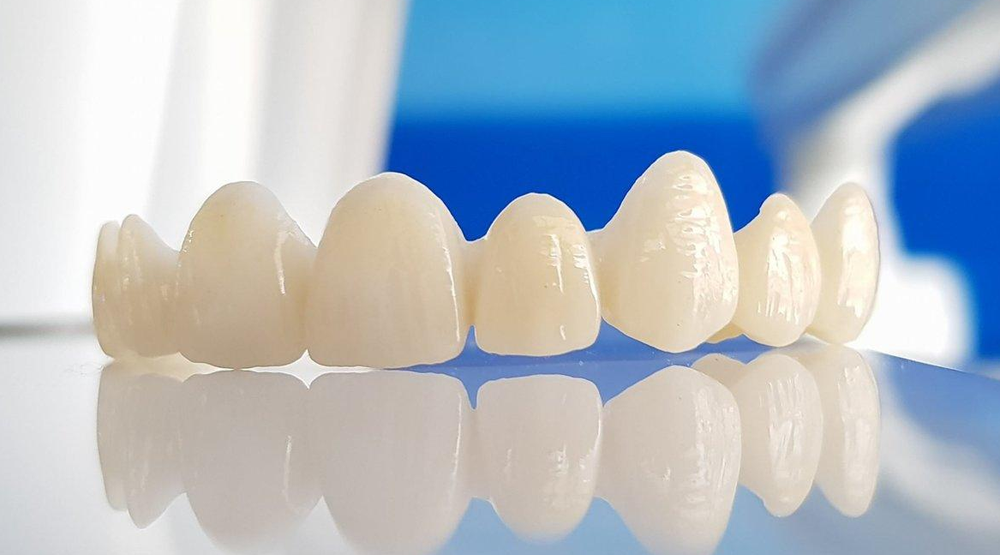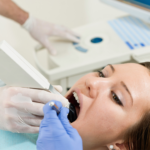
Since they were first introduced, dental crowns made from zirconia have become an increasingly popular option among the patients who need them and the prosthodontists who install them. Prized for their translucency, durability, and customizability, they represent not only the present of dental crowns but also the future.
If you’re a dental professional looking for a complete step-by-step guide to zirconia crown prep, look no further! You might also be interested in understanding the advantages and disadvantages of zirconia crowns compared to other materials, which we dive into here.
The prep process for zirconia crowns is similar to the process for a wide range of crown materials. While it can be a complicated procedure and requires careful precision, knowing the steps involved in a crown restoration—and the innovative tools that could help—can allow you to install a crown that lasts longer and promotes your patient’s overall health.
Patient Assessment and Impressions
Before prepping a patient’s teeth for zirconia crowns or other types of crowns, you’ll need to complete a number of assessments. This may include the type of crown needed, the location of the crown, the patient’s overall aesthetic goals (which is largely dependent if the crown is for an anterior or posterior tooth), and the health of their existing teeth.
In addition, you’ll need to take impressions of the patient’s teeth. Traditionally, the method for capturing impressions has involved the usage of trays and putty to map the contours of a patient’s teeth. However, this method can be an imprecise and time-consuming process with several steps:
- Taking impressions with PVS molds
- Creating stone models
- Shipping the models to a lab
Once the models are at a dental laboratory, you’ll also need to wait for them to complete the following:
- Scanning the models
- Designing the crown
- Printing or milling new models for fit
- Sending the crown to your office
On average, this might take somewhere between 12 to 15 days to complete.
The Digital Solution for Patient Assessment
Fortunately, innovative technology can make the prep process much smoother from the start. Today, intraoral scanners enable dentists to create highly accurate digital impressions within minutes. If you offer digital impressions in lieu of the analog method, your patients can benefit from more accurate dental crown prep and a faster process overall, often reducing the turnaround time to an average of 5 to 8 days.
With digital tools at your disposal, the process typically goes as follows:
- Perform the intraoral scan on the patient
- The digital scan is immediately and electronically sent to the lab
- With a digital impression, the dental lab can design and produce the crown more accurately
- The lab sends the crown to your office that will fit on the first fitting appointment
- Best of all, intraoral scanners are multi-use. They can cover the denture process, orthodontic appointments, implants, and more.
Prepping the Tooth Structure for a Zirconia Crown
The process of zirconia crown prep will vary depending on the location of the natural tooth receiving the crown. Although there is some overlap, the guidelines and specific measurements for things like incisal reduction and clearance are altered according to whether the crown is located:
- In the anterior region of the mouth, or
- In the posterior region
While this process can be complex, those using intraoral scanners may benefit from the advantages of digital modeling—enabling them to closely evaluate and easily plan out the prep process before it takes place.
Zirconia Crown Prep for Anterior Crowns
Anterior crowns require extra attention to aesthetic considerations. That’s because they are located at the front of the mouth, and are therefore likely to be visible when the patient smiles, eats, or speaks.
For that reason, zirconia crown prep at the anterior of the mouth means paying close attention to the following elements:
Clearance
When performing anterior zirconia crown prep, clearance is very important. You’ll need to leave at least 0.3 mm of space to accommodate the crown’s wall thickness. Additionally, you’ll need to account for an incisal reduction of either 1 to 1.5 mm or 1.8 to 2.0 mm.
Circumferential chamfer
The circumferential chamfer should be visible and continuous. At the gingival margin, you’ll need a reduction of at least 0.5mm.
Additionally, proper zirconia crown prep for anterior crowns includes prepping the tooth structure with an angle of approximately 5°, with no beveling.
Be sure to round each incisal edge. You can use a football diamond to reduce the side of the crown that faces the tongue so that it is slightly concave.
Zirconia Crown Prep for Posterior Crowns
In the posterior of the mouth, zirconia crown prep involves many of the same considerations that apply to anterior crowns, plus a few aspects that are specific to the back of the mouth. This is because the posterior section of the mouth is a startlingly different environment than the front of the mouth, as it shoulders more mastication responsibility and can be more vulnerable to cavities.
When prepping for posterior zirconia crowns, pay close attention to:
Clearance
Posterior crowns are slightly thicker than anterior crowns and thus need more room to accommodate their size. Approximately 0.5mm of space is recommended. The proper occlusal reduction is between 1 and 1.5mm or 1.5 to 2mm.
Circumferential chamfer
Visibility and continuity are key when it comes to zirconia crown prep. For posterior crowns, provide for a 0.5m reduction at the gingival margin. Additionally, posterior crowns should be slightly tapered between 4° and 8°.
Like their anterior counterparts, it’s recommended that you avoid beveling posterior crowns. The edges of the crown surfaces that come into contact with food should be slightly rounded.
Monolithic Restorations
In some situations, you may need to perform a monolithic crown restoration using solid zirconia dental crowns.
Solid or monolithic zirconia is well-suited to posterior crowns due to its increased durability and strength and may be an especially wise choice for patients who:
- Grind or gnash their teeth
- Have a heavy bite
- Present limited occlusal clearance
- Crowns that use solid zirconia need an occlusal depth of 1.0 to 1.5 mm. Additionally, the cusp tips should be reduced by 1 to 1.5 mm with a taper of 6° to 8° along the axial wall.
Unacceptable Crown Preparations
Certain factors can make dental crown prep ineligible for a zirconia crown. Knowing the rules of zirconia crown prep and following them closely can help you avoid errors that disqualify a prep, like:
- Undercuts
- Gutter preparation
- A 90° shoulder
- Parallel wall preparations
- Occlusal edges
- Sharp incisal
By being attentive to these situations, you’ll be better able to provide better-suited options for your patient’s specific circumstances.







Leave a Reply